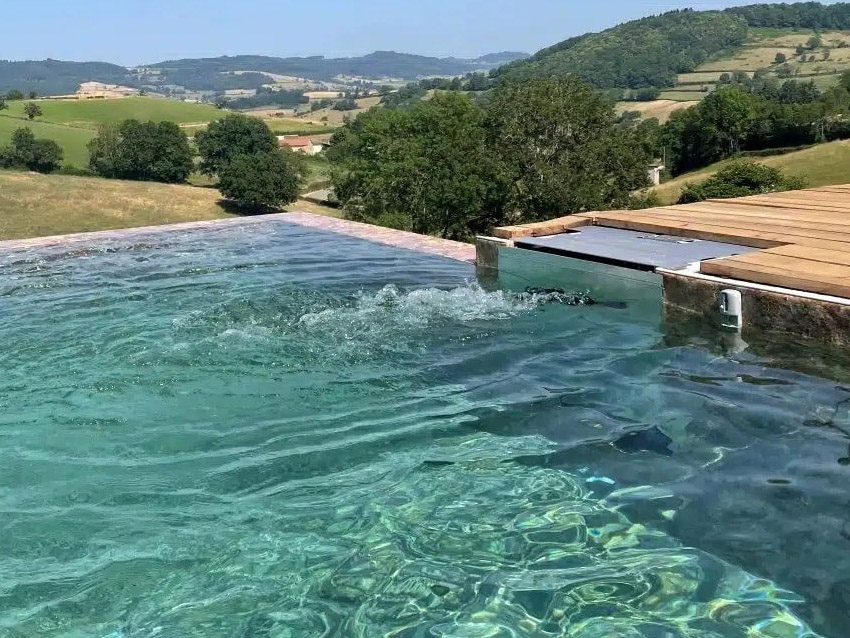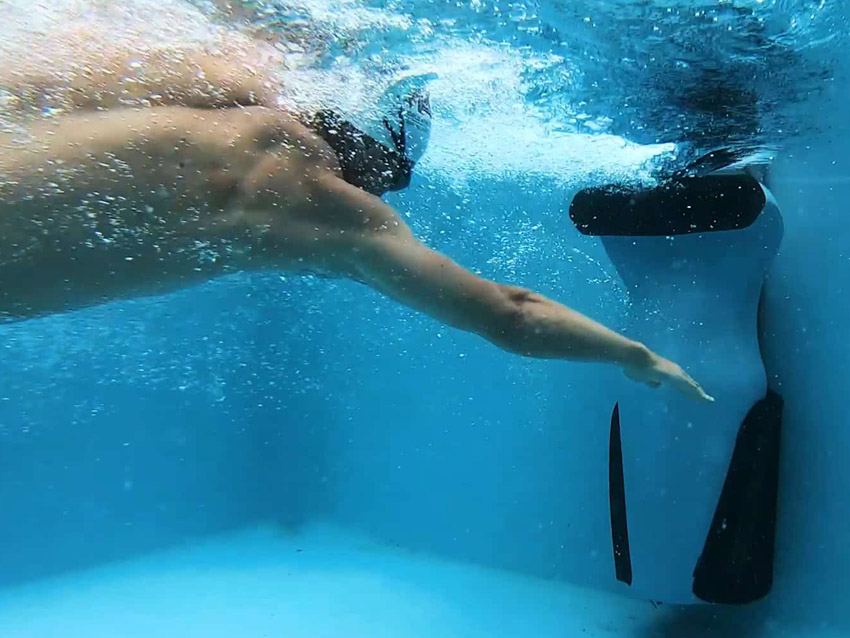
What are the differences between a turbine and a conventional counterflow pump?
Turbine vs pump
The practice of countercurrent swimming (NCC) in a pool is very beneficial for health. For it to be possible in a pool installed at home, however, it is necessary to equip oneself with a dedicated countercurrent swimming system (NCC), which can rely on either a pump or a turbine. What is the difference between these two operating modes? Which one to choose? Let’s clarify.
Read our swimming turbine guide

Pump or countercurrent swimming turbine: what are the differences?
To swim against the current in a private pool, you have 2 options: installing a pump or using a turbine.
The pump is the traditional system for countercurrent swimming. It allows water to be sucked in through one nozzle, which is then expelled through another outlet nozzle. The pump thus ensures the circulation of water between the two nozzles. The integration of a countercurrent swimming pump is only done during the construction of the pool.
The swimming turbine, on the other hand, creates a wide and powerful current thanks to a propeller that pushes water out of the turbine. The turbine provides excellent comfort, sensations similar to swimming in natural water, and a flow that perfectly envelops the body. It can also be connected — as is the case with the solution offered by Swimeo. Thus, the control of the countercurrent swimming system can be done via a smartphone app to program your swimming exercises.
Read also: How does a countercurrent turbine work?
Turbine or pump: how to choose?
There are significant differences between pumps and countercurrent swimming turbines.
Certainly, they are more economical (prices are around 5000 € for a good model), but pumps have several limitations :
- The flow rate is limited: a pump delivers a flow of 90 m3/h, which is insufficient for amateur or athlete swimmers who want to swim in their pool. In contrast, turbines deliver a flow of up to 300 m3/h.
- The technical integration of a pump is more complex: unlike an external turbine, a dry masonry box must be constructed behind the pool (which can increase the overall cost of the installation).
- The risk of failure is higher: the motor is located in a box that rarely remains dry at the pool edge, while it is not designed to operate in a humid environment. This increases the risks of failure over time.
- The electrical consumption of a pump is higher: a pump consumes from 2 to 4 kWh for an average flow of 90 m3/h, while a turbine consumes 1.1 kWh for a flow of 300 m3/h. This is the case with the Swimeo countercurrent swimming turbine.
The countercurrent swimming turbine offers a high-quality flow whose power is adjustable based on your needs (relaxation, returning to swimming, training for a triathlon or competition…). It is more economical and quieter than the pump for countercurrent swimming. Its design is more attractive, making it easier to integrate into the basin. It remains simple to use daily for all family members!
Read also: The advantages of a countercurrent turbine.
A final advantage of the turbine: its wide flow provides support for the entire body during swimming and allows you to move from left to right without losing the push of the flow.
Would you like to know more about Swimeo?



